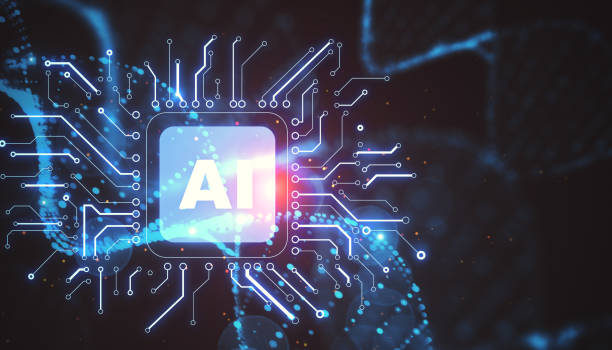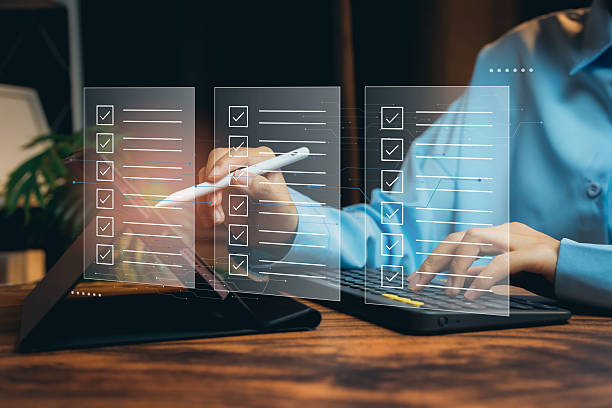What is an Artificial Intelligence Robot and How Does It Work
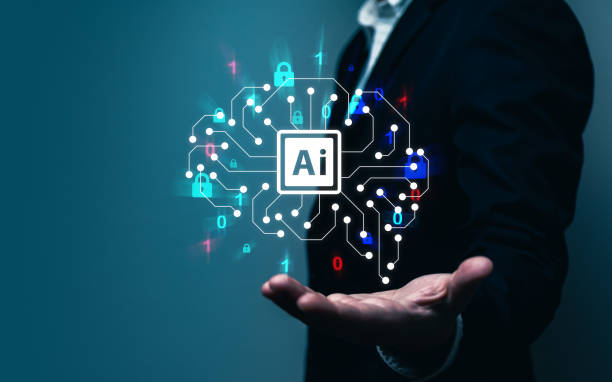
#Robot #ArtificialIntelligence (artificial intelligence robot) is a combination of two distinct but related fields: robotics and artificial intelligence.
Robotics deals with the design, construction, operation, and application of robots, while artificial intelligence deals with the development of intelligent computer systems that can perform tasks that usually require human intelligence, such as learning, problem-solving, and decision-making.
An AI robot is a robot equipped with an artificial intelligence system that allows it to operate intelligently in its environment.
These robots can collect data through sensors, process data using artificial intelligence algorithms, and make decisions and act accordingly.
In other words, an AI robot can learn, adapt, and perform tasks without direct human intervention.
The application of AI robots is very wide in various fields.
These applications include the following :
- Industry: Automation of production processes, quality inspection, material handling, etc.
- Healthcare: Precise surgeries, assistance to the elderly and disabled, drug distribution, etc.
- Services: Cleaning, delivery of goods, customer service, etc.
- Education: Interactive learning, personalized educational content, etc.
- Exploration: Space exploration, deep-sea exploration, etc.
In this article, we will delve deeper into topics related to AI robots.
Do you have an online store but your sales are not as expected? Rasaweb solves your problem forever with professional online store design!
✅ Significant increase in conversion rate and sales
✅ Unparalleled user experience for your customers
⚡ Click to receive free consultation with Rasaweb!
Main Components of an AI Robot

An AI robot consists of several main components that, working together, enable the robot’s intelligent operation. These components include:
- Hardware: Includes the robot’s mechanical body, motors, sensors (such as cameras, microphones, touch sensors, etc.), and other physical components that allow the robot to move, interact with the environment, and collect data.
- Software: Includes the operating system, artificial intelligence algorithms (such as machine learning, natural language processing, and computer vision), and applications that allow the robot to process data, make decisions, and perform tasks.
- Power Source: Includes batteries, external power sources, or other energy supply systems that provide the necessary power for the robot to function.
- Control System: Includes microcontrollers, processors, and other electronic components that control the robot’s operation and establish communication between various components.
The interaction of these components is as follows: sensors collect data from the environment, the data is sent to the control system, the control system processes the data using artificial intelligence algorithms and makes decisions based on it, and then the necessary commands for movement, interaction, or task execution are sent to the hardware.
Compared to traditional robots, AI robots have much more capabilities.
Traditional robots are usually programmed to perform repetitive and pre-determined tasks, while AI robots can learn, adapt, and perform more complex tasks without direct human intervention.
Artificial Intelligence Algorithms Used in Robots
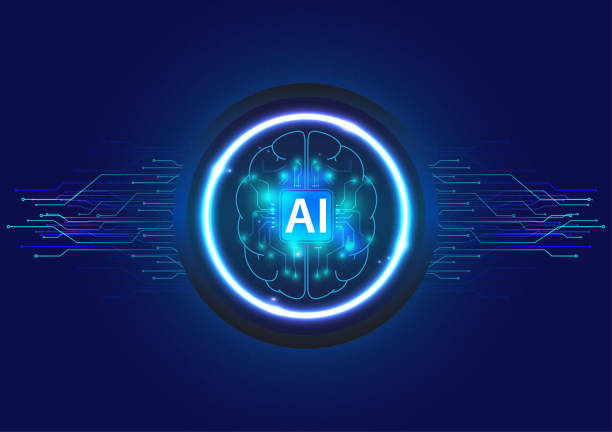
Various algorithms are used in AI robots, each of which is suitable for performing specific tasks.
Some of the most important of these algorithms are:
- Machine Learning: Allows the robot to learn from data and improve its performance.
There are different types of machine learning algorithms, including supervised learning, unsupervised learning, and reinforcement learning. - Natural Language Processing: Allows the robot to understand human language and interact with humans.
These algorithms are used for applications such as chatbots, voice assistants, and language translation. - Computer Vision: Allows the robot to understand images and videos and recognize objects, people, and scenes.
These algorithms are used for applications such as facial recognition, object recognition, and autonomous navigation. - Planning: Allows the robot to create plans for performing complex tasks.
These algorithms are used for applications such as path planning, motion planning, and production planning. - Expert Systems: Allows the robot to simulate the knowledge of human experts and make decisions in specific fields such as medicine, law, and engineering.
The choice of the appropriate algorithm depends on the type of task the robot must perform.
For example, if the robot needs to recognize objects, computer vision algorithms are used.
If the robot needs to interact with humans, natural language processing algorithms are used.
And if the robot needs to create plans for performing complex tasks, planning algorithms are used.
| Algorithm | Application |
|---|---|
| Machine Learning | Improving robot performance through data |
| Natural Language Processing | Understanding and interacting with human language |
| Computer Vision | Object and image recognition |
| Planning | Creating plans for complex tasks |
Applications of AI Robots in Industry

As previously mentioned, the applications of AI robots are very extensive, but perhaps one of the most important areas is industry.
AI robots can be used in production lines, warehouses, distribution centers, and other industrial sectors and offer many benefits.
Some of the most important applications of AI robots in industry include:
- Automation of production processes: AI robots can perform repetitive and dangerous tasks with high accuracy and speed, thereby increasing production efficiency and quality.
- Quality Inspection: AI robots equipped with advanced cameras and sensors can accurately inspect products and identify defects.
- Material Handling: AI robots can move materials and products inside the factory and reduce the need for human labor.
- Maintenance and Repairs: AI robots can inspect equipment and machinery and identify problems before they cause breakdowns.
- Supply Chain Management: AI robots can collect data from various sources and optimize the supply chain.
For example, in the automotive industry, AI robots can paint car bodies, assemble parts, and inspect product quality.
In the electronics industry, AI robots can assemble small parts with high precision and test electronic circuits.
And in the food industry, AI robots can package products and manage warehouses.
Don’t have a company website yet and are missing out on online opportunities? With professional company website design by Rasaweb,
✅ Double the credibility of your business
✅ Attract new customers
⚡ Free consultation for your company website!
AI Robots in Healthcare
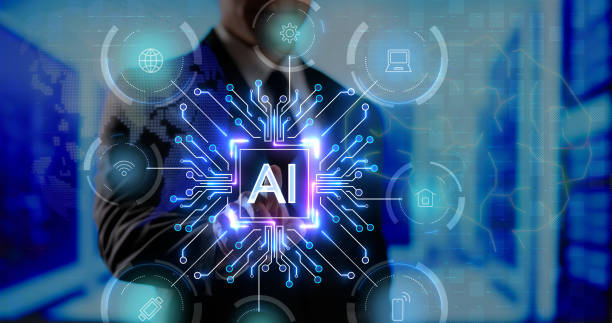
AI robots also have many applications in the field of healthcare.
These robots can be used in hospitals, clinics, laboratories, and even in homes and help doctors, nurses, and patients.
Some of the most important applications of AI robots in healthcare include:
- Precise Surgeries: Surgical robots can perform complex surgeries with high accuracy and precision and reduce side effects.
- Assistance to the Elderly and Disabled: Assistive robots can help the elderly and disabled with daily tasks and increase their independence.
- Drug Distribution: Pharmaceutical robots can distribute drugs in hospitals and pharmacies and prevent medication errors.
- Disease Diagnosis: Disease diagnosis robots can analyze medical images and diagnose diseases in early stages.
- Rehabilitation: Rehabilitation robots can help patients regain their physical and motor abilities.
For example, surgical robots can perform open-heart surgeries by making smaller incisions and reduce patients’ recovery time.
Assistive robots can help the elderly get out of bed, get dressed, and eat.
And pharmaceutical robots can ensure that patients receive the correct medication at the right time.
Challenges and Limitations of AI Robots
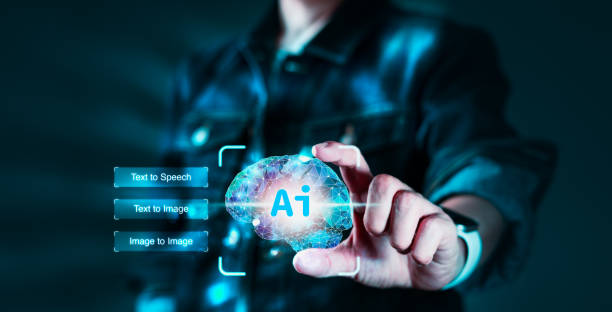
Despite their many advantages, AI robots still face challenges and limitations that prevent the further expansion of their applications.
Some of the most important of these challenges and limitations include:
- High Cost: The development, production, and maintenance of AI robots are very expensive, and this prevents many organizations and individuals from accessing this technology.
- Complexity: The design and programming of AI robots are very complex and require various specializations.
- Security: AI robots can be vulnerable to cyber attacks and hacked, and this can have serious consequences.
- Ethical Issues: The use of AI robots can create various ethical issues, such as job losses, discrimination, and privacy.
- Technical Limitations: AI robots still have technical limitations in some areas, such as understanding natural language, recognizing emotions, and solving complex problems.
To overcome these challenges and limitations, more research and development are needed in the fields of robotics, artificial intelligence, and other related fields.
Also, there is a need to develop laws and regulations that regulate the use of AI robots responsibly and ethically.
With the advancement of technology and the reduction of costs, it is expected that AI robots will play a more important role in our lives in the near future and help us solve many of the problems and challenges of society.
The Future of AI Robots

The future of AI robots looks very bright and promising.
With the advancement of technology and the reduction of costs, it is expected that AI robots will be present in all aspects of our lives and help us perform various tasks.
Some of the most important future trends of AI robots include:
- Robots Becoming Smarter: With the advancement of artificial intelligence algorithms, robots will be able to perform more complex tasks and operate more independently.
- Robots Becoming Cheaper: With increased production and improved technology, the cost of producing robots will decrease, and this will make robots available to more people and organizations.
- Expanding Applications of Robots: Robots will have more applications in various fields such as industry, healthcare, services, education, etc.
- Better Human-Robot Interaction: Robots will be able to interact with humans more naturally and friendly and have a better understanding of their needs.
- Robots Collaborating with Each Other: Robots will be able to collaborate with each other and perform complex tasks jointly.
| Trend | Description |
|---|---|
| Robots Becoming Smarter | Ability to perform more complex and independent tasks |
| Robots Becoming Cheaper | Greater access for individuals and organizations |
| Expanding Applications | Application in various fields |
| Better Human Interaction | More natural and friendly interaction |
Impact of AI Robots on the Job Market
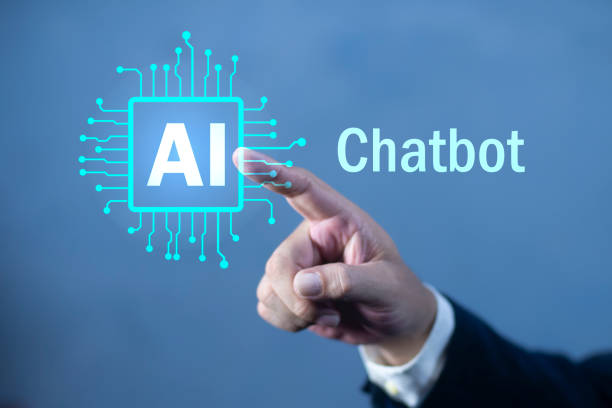
One of the main concerns about AI robots is their impact on the job market.
Some people are worried that robots will cause job losses and increase unemployment.
While these concerns are partly correct, it should be noted that robots can also create new jobs and increase productivity.
In general, jobs that are repetitive, dangerous, or require a lot of human labor are more at risk of being lost.
On the other hand, jobs that require creativity, critical thinking, and communication skills are less at risk of being lost.
To prepare for the changes caused by robots, people need to upgrade their skills and familiarize themselves with new technologies.
Also, governments and organizations should create programs for training and retraining the workforce so that people can find new jobs.
AI robots can have positive and negative impacts on the job market.
To maximize the benefits of robots and minimize their negative effects, proper planning and management are needed.
Are you tired of losing business opportunities due to not having a professional company website?
Rasaweb, with professional company website design, helps you:
✅ Build a powerful and reliable image of your brand
✅ Turn website visitors into loyal customers
⚡ Get a free consultation now!
Important Tips for Choosing and Buying an AI Robot
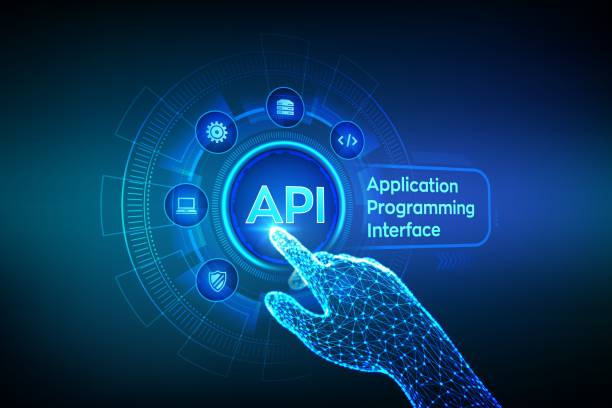
If you are planning to buy an AI robot, you need to pay attention to important points so that you can choose the right robot for your needs.
Some of these points include:
- Determine Needs: Before buying, you need to accurately specify your needs.
What tasks do you want the robot to perform? What type of environment should the robot work in? What budget have you considered for buying the robot? - Research and Review: Before buying, you should research different types of robots and compare their technical specifications and prices.
- Choose a Reputable Seller: Purchase the robot from a reputable and experienced seller to ensure the quality and authenticity of the robot.
- Warranty and After-Sales Service: Before buying, make sure there is a warranty and after-sales service.
- Training and Support: Ask the seller to provide you with the necessary training to use the robot.
By paying attention to these points, you can choose the right AI robot for your needs and benefit from its advantages.
Remember that AI robots are powerful tools that can help you perform various tasks, but you need knowledge and skills to use them.
Ethical Issues Surrounding AI Robots

As previously mentioned, the use of AI robots can create various ethical issues.
Some of the most important of these issues include:
- Job Losses: Robots can replace human labor and cause job losses.
This can lead to increased unemployment and poverty. - Discrimination: Artificial intelligence algorithms can be discriminatory and make decisions that are detrimental to certain groups of people.
- Privacy: Robots can collect a lot of data about people, and this data can be misused.
- Responsibility: If robots cause damage, it is difficult to determine responsibility.
- Control: AI robots can get out of control and create dangers.
To solve these ethical issues, there is a need to develop laws and regulations that regulate the use of AI robots responsibly and ethically.
Also, there is a need for education and awareness among the public about the ethical issues related to AI robots.
The development and use of AI robots must be accompanied by ethical principles and responsibility to prevent problems and dangers.
Frequently Asked Questions
| Row | Question | Answer |
|---|---|---|
| 1 | What is an AI Robot? | An AI robot is a machine capable of understanding, reasoning, learning, and problem-solving and can perform complex tasks with relative autonomy. |
| 2 | What are the most important applications of AI robots? | Main applications include industrial production, customer service (chatbots), medicine and surgery, self-driving transportation, space exploration, and military affairs. |
| 3 | What is the main difference between an AI robot and a regular robot? | A regular robot only follows programmed instructions, while an AI robot can learn from data, make decisions, and adapt to new environments. |
| 4 | How do AI robots learn? | They identify patterns and improve their performance through machine learning algorithms (such as deep learning, reinforcement learning) and processing vast amounts of data. |
| 5 | Can AI robots have emotions? | Currently, AI robots do not have real emotions in the human sense. They can mimic or recognize emotions, but they do not understand or experience them. |
| 6 | What are the current limitations of AI robots? | Limitations include the need for large amounts of data, the inability to understand abstract concepts, the lack of real creativity, ethical issues, and the challenges of generalizability in new environments. |
| 7 | What is the role of AI in the development of humanoid robots? | AI helps humanoid robots to walk, maintain balance, understand the surrounding environment, interact with humans, and perform complex tasks. |
| 8 | How is the future of AI robots predicted? | It is predicted that AI robots will become smarter, more autonomous, and capable of performing more complex tasks in daily life and industry, and their interaction with humans will increase. |
| 9 | Can AI robots replace all human jobs? | It is unlikely that all human jobs will be replaced. Robots will take over many repetitive and dangerous tasks, but jobs that require creativity, empathy, and ethical judgment will remain. |
| 10 | What ethical and social challenges are raised by the expansion of AI robots? | Challenges include issues related to privacy, data security, ethical decision-making by robots, impact on employment, and accountability in case of errors. |
And other services of Rasa Web advertising agency in the field of advertising
Intelligent digital advertising: Transform digital branding with the help of precise audience targeting.
Intelligent digital branding: A fast and efficient solution to increase sales by focusing on intelligent data analysis.
Intelligent Google Ads: An effective tool to increase website visits with the help of custom programming.
Intelligent advertising campaign: Transform the click-through rate with the help of customizing the user experience.
Intelligent digital branding: Transform campaign management with the help of optimizing key pages.
And more than hundreds of other services in the field of internet advertising, advertising consulting and organizational solutions
Internet Advertising | Advertising Strategy | Reportage Advertisement
Sources
What is Artificial Intelligence?
,Applications of Artificial Intelligence
,Types of Artificial Intelligence
,All About Artificial Intelligence
? With “Rasaweb Afrin,” take your business to the peak of success. We at Rasaweb Afrin Digital Marketing Agency specialize in providing comprehensive digital solutions to help you on your path to growth. From multilingual website design and search engine optimization to social media management and targeted advertising campaigns, we use our knowledge and experience to help you have a powerful online presence and attract more audiences. With us, the future of your business is brighter.
📍 Tehran, Mirdamad Street, next to the Central Bank, South Kazerun Alley, Ramin Alley No. 6

